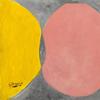
AMERICAN MINING: PAINTINGS AND WORKS ON PAPER, 1932 TO 1947
The paintings and works on paper in this exhibition largely feature coalmines and miners of Pennsylvania and West Virginia, as well as feldspar mining in North Carolina and a molybdenum mine in Climax, Colorado. The earliest works in the show are by Riva Helfond. Her future husband, Bill Barrett, was from the anthracite region of northeastern Pennsylvania and her works of that area date from 1932. In 1936 Harry Sternberg was awarded a Guggenheim Fellowship to record American industry; the coalmines of Pennsylvania were a focus of that project. Sternberg was an instructor at the Art Students League in New York City. Helfond was in one of his classes and she had entrée into the homes of miners. In the 1936-37 season Sternberg and a few students would leave New York on Friday afternoons, drive to Pennsylvania, and stay with a mining family. They would draw on Saturday and then head back to the city on Sunday. Will Barnet, Blanche Grambs, Mary Sinclair (whose work in the show dates to 1934), and Charles Keller (represented here by the Deer Park Mine, a source of feldspar in North Carolina), all worked at the League. There are also pieces by Georges Schreiber and Ben Shahn. A number of the works in show are by Michael J. Gallagher. From a mining family, Gallagher was the director of the Philadelphia WPA Printmaking Project; Hugh Mesibov also worked at that shop. Recently the Gallagher estate released a significant number of early prints, including the iconic carborundum print Anthracite, 1939-40, that have not been on the market in decades. The Fred Shane painting Climax, Colorado, 1943-44, refers to the site of an enormous molybdenum mine still in operation. Molybdenum, a metal with an extremely high melting point, is used in the production of steel. THE ENTIRE SHOW MAY BE SEEN UNDER EXHIBITIONS AT WWW.SUSANTELLERGALLERY.COM HOURS: TUESDAY THROUGH SATURDAY, 11 AM TO 5 PM











100x100_c.jpg)




